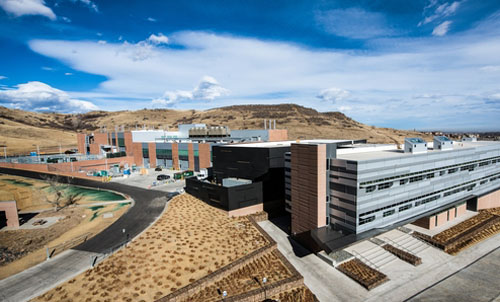Oct 27 2014 NREL partners with industry to address tough energy challenges

Energy Systems Integration Facility at the National Renewable Energy Laboratory in Golden, Colorado.
The National Renewable Energy Laboratory is bringing together the best minds from the worlds of research and industry in its Transportation and Hydrogen Systems Center (THSC), where the goal is to collaboratively transition to a new energy future.
In a recent feature story from the NREL, the laboratory highlights its partnerships and focuses on the importance of “integrating industry perspectives” through hiring leaders with cross-sector experience. The lab has “attracted national-caliber experts to its staff from the commercial sector, while continuing to bank on the intellectual capital of its research veterans.”
THSC Director Chris Gearhart and Vehicle Technologies Laboratory Program Manager John Farrell are two prime examples who joined NREL in 2013 after three collective decades in the automotive and fuels industries. “Their ability to provide industry perspectives was essential for maintaining our relevance,” said Associate Lab Director for Mechanical and Thermal Systems Engineering Barbara Goodman.
Discussing the cross-sector nature of NREL’s goals, Farrell said, “The government, automakers, component manufacturers—they’re all our partners…our work must deliver the greatest possible energy savings, while being informed by private-sector realities.”
In the last year alone, NREL has worked with General Electric, the U.S. Advanced Battery Consortium, and all of the Big Three automakers to innovate in sustainable transportation. In 2013, NREL boasted 166 active cooperative research and development agreements (CRADAs) — more than any national laboratory.
NREL “sees the continued integration of industry and research perspectives as vital to the success of its research and development in this area,” according to the story.
Emphasizing the interdependence of each industry and public partners, Gearhart said, “If we are going to accelerate the widespread adoption of sustainable transportation technologies, we need to pull with industry to identify the most viable solutions, break down market barriers, and increase the competitiveness of that technology.”
Farrell added, “At the same time, without rigorous, independent research, those solutions aren’t going to take us where we need to go.”
